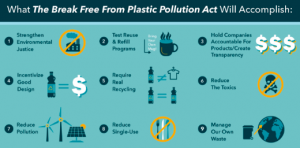
Eco-Friendly Routes – Thank You Google Maps

Source: Unsplash
Google has done it again – providing routes for not only the directionally impaired but those who want to have a smaller carbon footprint too! The Google Maps app will direct drivers to take routes which produce the lowest carbon emissions possible to get to your end destination. This is done by considering traffic, slopes, and several other factors to calculate the most eco-friendly route.
This feature will be available later this year in the United States, and will spread throughout other countries in order to stand up for the fight against climate change. The user will still have full control of which route they would prefer to take, but the default route will be the most carbon friendly one but also comparable to the fastest route too. If other routes show to be much faster, the app will allow the users to see the difference in time and emissions and choose for themselves.
Russell Dicker, a director of product at Google stated, “What we are seeing is for around half of routes, we are able to find an option more eco-friendly with minimal or no time-cost tradeoff,” allowing this to be a win-win for the environment and drivers. So hip-hip hooray to technology standing alongside us to make small changes that can eventually lead to big outcomes in the name of the environment.
Break Free from Plastic Pollution Bill Enters Congress: So, What’s it All About?

Source: Break Free From Plastic
The Break Free from Plastic Pollution Act of 2021 holds many of the same provisions as its 2020 predecessor with measures targeting Extended Producer Responsibility. If passed, the bill would require packaging manufacturers to be responsible for the “design, collection, reuse, recycling, and disposal of their consumer products and packaging, to prevent pollution from consumer products and packaging from entering into animal and human food chains and waterways, and for other purposes.” Plastics manufacturers would be required to increase the post-consumer recycled content of beverage containers to 25% by 2025, 50% by 2030, 70% by 2035 and 80% by 2040.
The Act aims to accomplish the following: strengthen environmental justice, test reuse and refill programs, hold companies accountable for products/create transparency, incentivize good design, require real recycling, reduce toxics, reduce pollution, reduce single-use plastics, and manage our own waste. The details of a nationwide single-use plastic bag ban also is contained in the bill. Manufacturers or retail establishments that are not compliant with the requirements would face serious economic repercussions. Finally, the bill outlines a national bottle collection refund with a minimum 10-cent regardless of material. Greenpeace USA, 5 Gyers, the Surfrider Foundation, and the Plastic Pollution Coalition are just some of the supporters of the Act. Industry leaders are pushing back, arguing that the Act would stall efforts to address plastic waste in the environment and limit the essential role plastic plays in reducing greenhouse gas emissions. The legislation includes damaging provisions that would restrict the production of modern and innovative plastic materials and limit advanced recycling technologies needed to recover plastic waste and revolutionize how we use – and reuse – our plastic resources. Two sides to an issue that is, in my opinion, a no-brainer. Stagnant and linear supply chains, with cheap materials designed for obsolescence, marketed to a fast-paced consumer culture, is the problem. Plastics end up in our oceans, degrade our ecosystems, harm animals, and even end-up in our food chains.
To read a detailed summary of the Pollution Act click here. #breakfreefromplastic
We Finally Captured a Photo of the World’s Most Secretive Mammal!

Source: Assou et al., 2021
Have you ever seen or heard of a Walter’s duiker before? These small African antelopes are known for being one of the most secretive mammals in the world. Some even joke that this species must have the power of invisibility due to the great difficulty it is to observe them. But the lucky day has come for those who study this species because they finally have an image of two in the wild.
Researchers at the Wildlife Conservation Research Unit (WildCRU), University of Oxford, caught the first ever photo of a Walter’s duiker in it’s natural, wild habitat. The taking of this photo was part of a 9000-day, 100-camera monitoring project in Fazao-Malfakassa National Park, the largest protected area in the country. This was the first ever comprehensive remote camera trapping survey for mammalian megafauna in Togo (West Africa). The team recorded many other endangered and endemic species but were pleasantly surprised when they captured an image of Walter’s duikers.
Walter’s duikers have been a mystery to scientists for years. “This graceful antelope has, for the last 200 years, displayed a great talent for avoiding scientists, but proven tragically less adept at avoiding nets, snares and hunting dogs. Camera ‘trapping’ revolutionizes biological survey: an army of cameras sits patient and uncomplaining, immobile for months on end, awaiting an interesting passer-by,” said Professor David Macdonald, WildCRU’s Director.
Dr. Gabriel H. Segniagbeto, Associate Professor at University of Lomé, said, “It is critically important to recognize the importance of the protected area system of Togo, which acts as a vital stronghold for a rich diversity of wild mammals. We hope our exciting find will increase the call for further protection of our remaining forest and savannah.”
This photo sounds like a big win in the wildlife research world as it has not only brought a secretive species to light, but has brought awareness to the biodiversity crisis and provided a celebration of biodiversity.
Frequent Flyer Club – More Like Privileged Polluter Club

Source: Unsplash
Ain’t no mile high club when it comes to emissions. A select few frequent flyers are dominating air travel and contributing to a hefty amount of emissions. In the UK, 70% of flights are made by 15% of the wealthy population. This is circulating a conversation on implementing frequent flyer levy – which a tax would be incurred by the globetrotters and would increase with each year as more flights are taken.
While there are many reward systems we have heard of such as Airmiles and Aeroplans that support frequent flyers – Greenpeace wants them to be banned as it encourages people to take more flights, they also support the tax.
This is not just exclusive to the UK, this trend is seen in many other wealthy countries, as shown by research. With some of the parallel statistics shown below:
- Canada: 22% of the population takes 73% of flights.
- The Netherlands: 8% of people take 42% of flights.
- China: 5% of households take 40% of flights.
- India: 1% of households take 45% of flights.
- Indonesia: 3% of households take 56% of flights.
This overall displays the income inequality that reflects the emission per person inequality. How a select few produce a considerably larger amount of emissions per person due to their lifestyle and being able to afford it – without any consequences. We shall see what the future holds for the privileged flyers club and if they will soon run out of points.
Consumers are the Biggest Threat to Climate Change, But We Already Knew That, Right?

Figure shows how national deforestation footprints have changed between 2001 and 2015 for these 6 countries // Source: Carbon Brief citing Hoang and Kanemoto, 2021
A new study published in the journal Nature Ecology and Evolution looks at the global deforestation picture over the years between 2001 and 2015. Using high-resolution forest maps and a global supply chain model, the researchers compiled a comprehensive and highly detailed account of how deforestation is being driven by consumer behaviour. So, while countries like the UK, Germany, China and India have all planted more trees domestically in recent years, all are linked to rising deforestation outside their borders, specifically in tropical forests i.e., the Amazon. While consumers in India and China are responsible for the loss of around one tree per person per year, this rises to almost four in the richer G7 group of countries (3.9).
According to the researchers, growing international trade is doing more harm than good for climate and for biodiversity. The researchers were able to be very precise about the impacts of this trade. Cocoa consumption in Germany poses the highest risk to forests in Cote D’Ivoire and Ghana, while in Tanzania, it’s the demand for sesame seeds among Japanese consumers that’s a key driver. It’s not just the wealthier nations – demand in China is responsible for deforestation in Northern Laos as land is cleared for rubber plantations. The authors argue that economic growth is not the answer. As richer countries saw their economies grow dramatically over the period of the study, their dependence on tropical forests has increased. Have you ever heard of ‘the rich get richer while the poor get poorer’ rhetoric? Instead, the authors are arguing for the need to reform zero-deforestation policies through strong transnational efforts and by improving supply chain transparency, public–private engagement and financial support for the tropics.
Jumping into Earth Month with EcoHack-a-city Events!

Source: Earth Day Canada
Earth Day Canada is launching its first ever EcoHack-a-city Initiative, which includes a series of sustainable solutions-focused events across the country! This series of events, in collaboration with the TD Ready Commitment program, aims to create networks and foster partnerships between all the stakeholders involved in making cities more sustainable.
Each EcoHack-a-city event will have two running programs: a virtual panel with experts who will share their insights on local environmental actions, and an online training program to kickstart the development of solutions from all sectors.
This initiative is taking place in 5 regions of Canada to seek nationwide action and solutions. From the west to east coast, each region’s event will have a different theme ranging from small-scale green energy solutions, to sustainable transportation, to moving towards a zero-waste industrial sector. For more details and dates of each event, click here.
Speaking of Earth month… A\J and Earth Day Canada are teaming up to produce a collaborative editorial series – “The Past, Present, and Future of Earth Day”. We will be releasing articles on the Thursdays leading up to Earth Day (April 8, April 15, April 22). Keep an eye out for this awesome series coming to you next week!!!


Greta Vaivadaite is a Journalist, Online Editorial and Social Media Coordinator at Alternatives Media. Greta has completed her undergraduate studies at York University in Environmental Management, and completed her Masters of Environment and Sustainability at Western University in 2020. Her professional interests lay in advocating for environmental education, sustainable fashion, and a greener travel industry.













